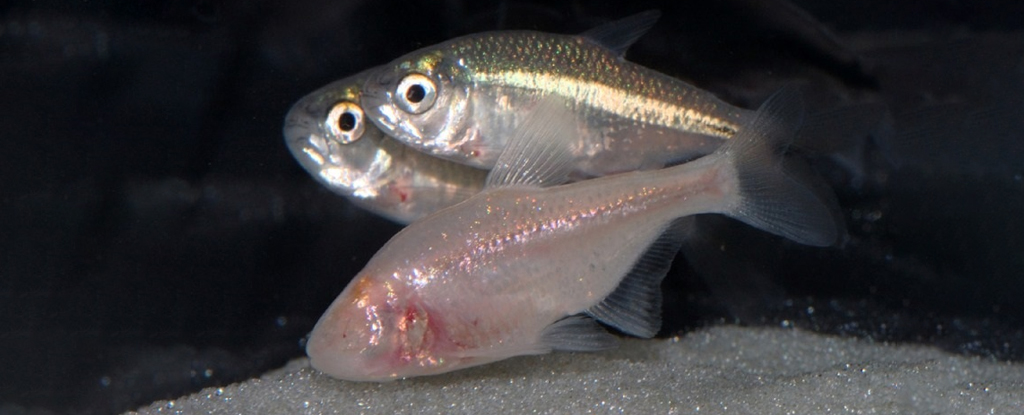A blind fish Those who live in the deep, enduring darkness of a Mexican cave system still retain the ability to sense light.
Because cave fish no longer appear to rely on an internal diurnal cycle, and some sleep very little, marine biologist Inga Steindal of University College London and her colleagues were keen to see if their bodies could still regulate themselves cyclically over time.
Most animals on earth have an internal clock for this purpose circadian rhythm that uses light levels to synchronize our bodies with our planet’s day and night cycles. This rhythm is then used to cycle through various biological processes that can drive our behavior, such as: B. our hunger cycles, which prompt us to eat, and melatonin levels, which determine our sleepiness warning cycle.
The Mexican blind cavefish (Astyanax mexicanus) live in a complex of over 30 isolated burrows, each in which they have independently adapted to the darkness.
Their bodies are particularly sensitive to vibrations, so to compensate for their limited or total visual impairment, they can perceive changes in the water currents to use as an aid to navigation. Some have even lost their eyes entirely.
This adaptation occurred even though the fish from each cave were from the same species and had fully functional eyes. This ancestral group still lives in the surface waters of the El Albra region of Mexico and some parts of the southwestern United States, and separated from the cave dwellers between 10,000 and 10 million years ago, depending on the cave. However, these are still the same species that can interbreed.
Cavefish are rare, difficult to study and do not do well in captivity but are blind A. mexicanus have shown an unexpected ability Assume a light-dark cycle when kept in the laboratory.
Steindal and his team took tissue samples from blind cavefish from three isolated caves and their surface ancestral embryos and tested the cells under different conditions.
They discovered activation of several molecular clock mechanisms when cells were exposed to light, even in cavefish cells.
“The detection of non-visual light is preserved at a fundamental cell-based level,” say the researchers explainalthough the cave fish cells did not respond as strongly as the surface fish cells.
While there were some similarities between the fish from the different caves compared to their surface relatives, there were also differences confirming that their biological clock mutations each evolved independently via different molecular mechanisms.
“We have provided evidence that cells of the Mexican blind cavefish, despite their blindness, can detect light and set their clocks on a light-dark cycle,” Steindal and colleagues said conclude.
The team hopes these cell cultures can teach us more about circadian rhythms and provide an easier way to study animals’ adaptations to dark environments.
This research was published in Proceedings of the Royal Society B.





